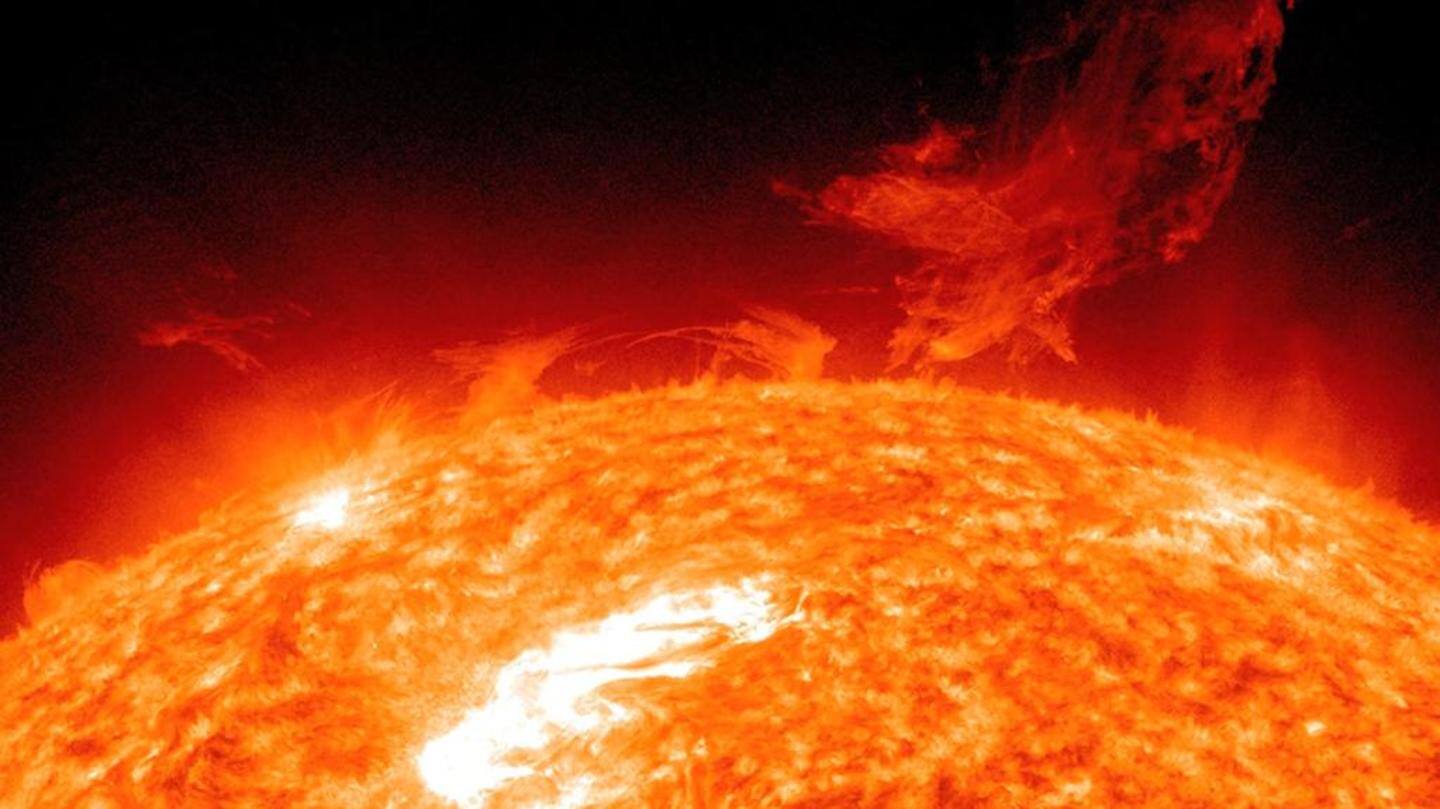
Giant eruption occurs on the Sun; might caught geomagnetic storms
What's the story
An explosion occurred behind the Sun's northeastern limb on Sunday and hurled a C9.3-class solar flare.
The flare detected by Earth-orbiting satellites might cause minor G1-class geomagnetic storms here on August 3.
The explosion formed a new sunspot on the star's surface, and such occurrences will increase in the coming days as the Sun has started one of its 11-year solar cycles.
Context
Why does this story matter?
As the Sun embarks on its new solar cycle, flares and eruptions will grow more intense. Our magnetic field is quite capable of protecting us from the harmful effects of flares but not all of them can be stopped.
In our modern world dependent on technology, disruptions caused by them can lead to the breakdown of communication systems.
Impact
What are solar flares and how do they affect us?
Solar flares are an eruption of intense radiation from the Sun's surface. These high-speed streams of solar wind affect us when they graze the Earth's magnetic field.
Depending on the severity, they affect radios and satellite communications and might cause power grid fluctuations in certain cases.
Animals like migratory birds that rely on the magnetic field for direction can also get confused.
Information
Auroras are also formed because of solar flares
Not all effects of solar storms are negative. In fact, when they come into contact with Earth's magnetosphere, beautiful natural light displays called auroras are created. They are only visible at night and appear in the polar regions.
Process
Flare erupting from southern hole in Sun's atmosphere
The newest explosion on the Sun is a significant one and was initially hidden by its edge. However, the National Aeronautics and Space Administration (NASA's) Solar Dynamics Observatory witnessed hot debris emanating from the site.
The flare is flowing out from a southern hole in the star's atmosphere and Earth is not in its line of fire. However, a low-intensity geomagnetic storm might form.